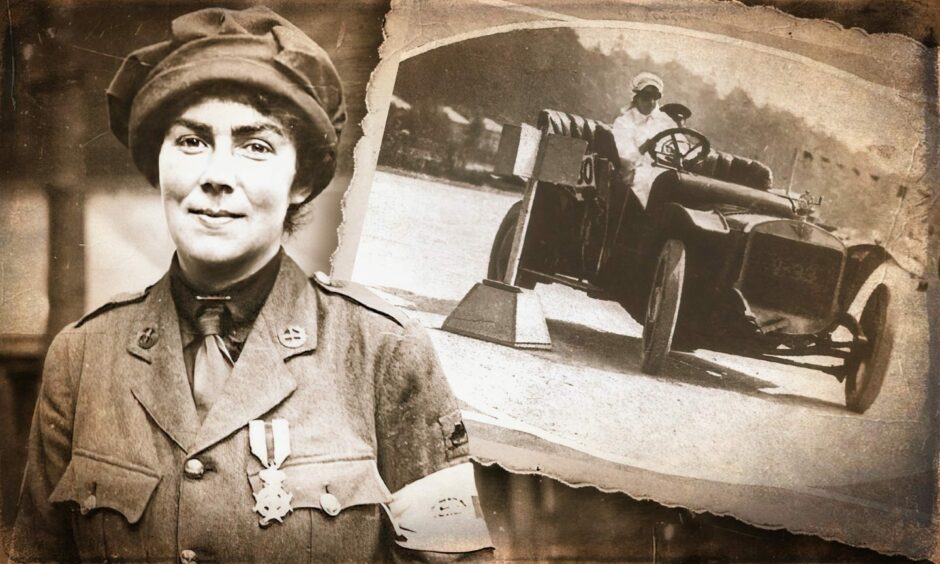
The mystery over the identity of an unnamed ‘young lady chauffeur’ hired to drive suffragette leader Emmeline Pankhurst around the Highlands has been solved.
She was a force to be reckoned with – a racing driver from Aberdeen who would go on to become a suffragist and First World War hero.
Thanks to a reader we can reveal the identity of the daredevil ambulance driver who ‘led a gallant life’ and was awarded military honours for evacuating wounded soldiers while under fire.
Who was the ‘young lady chauffeur’?
Reader Bill Robertson, of Turriff, got in touch about a recent article about suffragettes suspected of fire-raising in the Highlands in 1914.
And he helped fill in the dots about the unnamed ‘young lady chauffeur’ hired to drive suffragette leader Emmeline Pankhurst around the Highlands in 1909 on a fundraising tour.
The press at the time reported much admiration for this anonymous young woman, for “after only two months driving experience, she has something to be proud of inasmuch as she drove her car north through Drumochter Pass and Dalnaspidal at night.”
By remarkable coincidence, Bill and his wife knew the answer from a visit to London this summer.
It was an intriguing train of events.
Bill said: “We had stumbled across West Brompton Cemetery.
“It’s a beautiful place and we spent a pleasant afternoon there following the cemetery map to a variety of famous graves including those of Emmeline Pankhurst and Henry Cole, inventor of the Christmas card.
“While there, we got chatting to a local lady who came originally from Aberdeen and who had worked for Aberdeen Council.
Daredevil driver was a force of nature
“She had recognised our north-east accents, and in the course of our conversation, directed us to the grave of a notable Aberdonian, Muriel Thompson.
“It wasn’t highlighted on the cemetery map.
“We’d never heard of her but I took photos of her grave where she’s buried, with at least one of her parents, with a resolve to explore further.”
On his return, Bill was amazed at what he found.
Muriel was a force to be reckoned with.
She was born in 1875 in Aberdeen to Agnes Marion Williamson, second wife of Cornelius Thompson, a ship owner and marine architect.
The Thompsons were a notable family in the north-east.
Muriel’s grandfather was George Thompson junior, laird of Pitmeddon, deputy lieutenant of Aberdeenshire, provost of Aberdeen, member of parliament for Aberdeen, and founder of the George Thompson Shipping Company, later the Aberdeen White Star Line.
Muriel Thompson grew up in London
Muriel was educated at Blackheath High School and Hacking College, North London.
After the death of her father, she lived with her mother at 48 Queensgate, London.
Motoring seems to have been in Muriel’s blood — from the earliest possible age, she started driving the family car, and with her brother’s help found the Brooklands Automobile Racing Club.
At the Ladies’ Bracelet Handicap in 1908 – the first all-women race held at Surrey’s Brooklands motor circuit –Muriel caused quite a stir by beating the wife of the racetrack’s owner with yards to spare.
Their long skirts tied around their ankles with rope to stop them becoming tangled in the cars – and to avoid flashing their knees – the five women racers wore colourful silk scarves and adopted a variety of interesting driving styles.
Some sat bolt upright and others practically lay down.
But Muriel – in her brother Oscar’s Austin, named “Pobble” – reached speeds of 50mph as she crouched over the steering wheel like a jockey.
Muriel had already entered several races, even winning a risky blindfolded dash in a “moto gymkhana” the year before.
Turning point
The Bracelet race proved a turning point for Muriel, as it was attended by suffragettes, crying “women deserve the vote now!”
She agreed, and was hired as a chauffeur by the Women’s Social and Political Union.
Driving a green Austin with white wheels and purple stripes – the suffragette colours – she took Emmeline Pankhurst on her 1909 national tour.
Bill said: “I find it hard to believe the local press’s comment that she negotiated the Drumochter Pass at night after only two months driving experience.
“She’d already won some motor racing prizes before then, which would certainly explain her obvious expertise as a driver.”
Muriel’s daredevil driving skills proved lifesaving during the First World War.
In 1915, she signed up to the First Aid Nursing Yeomanry (FANY), and was immediately in the thick of it.
Three months later, she was awarded the Knight’s Cross of the Order of Leopold II by King Albert of Belgium for evacuating wounded soldiers under fire.
One of the first female Army drivers
Two years later she became one of the first women to drive for the British Army which had hitherto refused FANY’s services.
Her meticulous wartime diaries reveal that she saved hundreds of lives during the conflict.
In January 1918, she became Commanding Officer of the newly-formed St Omer convoy, and was awarded the Military Medal and the Croix de Guerre for her fearless fight to evacuate the injured during air raids.
Muriel returned to Britain two months before the war ended and resigned from FANY in 1922 as one of the bravest and best they had.
After the war, she lived in Kensington, and died there just before the outbreak of the Second World War.
Votes for women was achieved
At least she would have been able to experience, for more than a decade, full women’s suffrage in Britain.
Bill said: “The inscription on her simple gravestone at the foot of the Thompson plot reads: ‘She led a gallant life.’
“I can only exclaim in admiration, she sure did!”
More like this:
Hidden history: Former home of Aberdeen suffragette goes up for sale
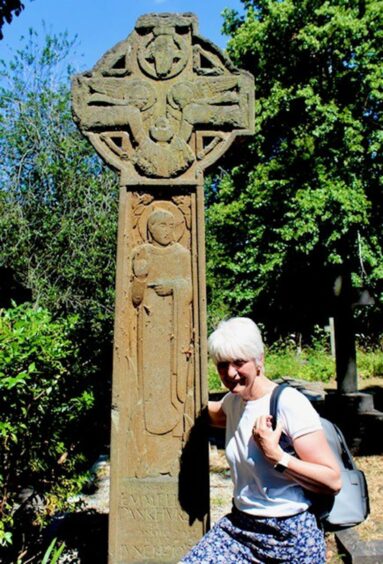

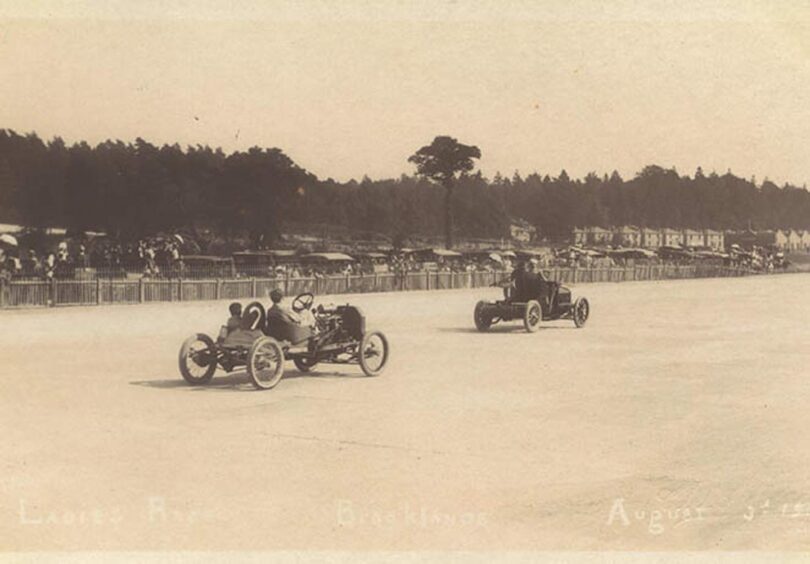
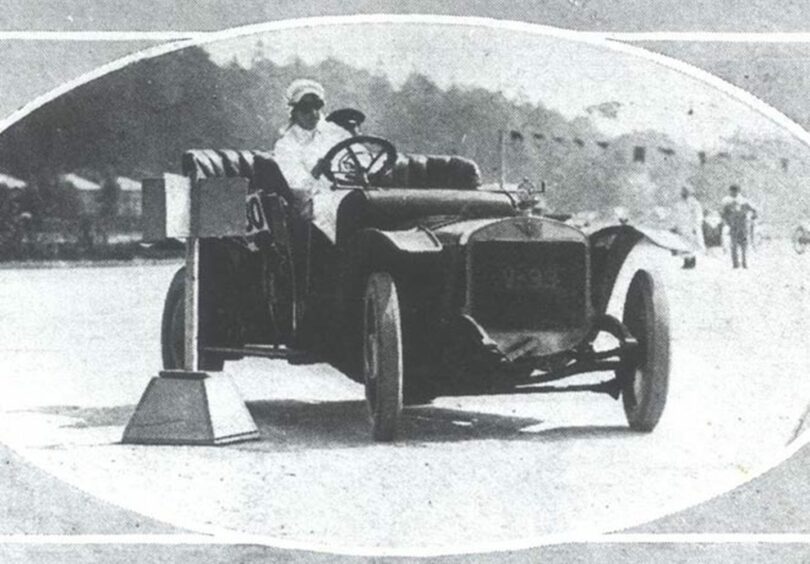

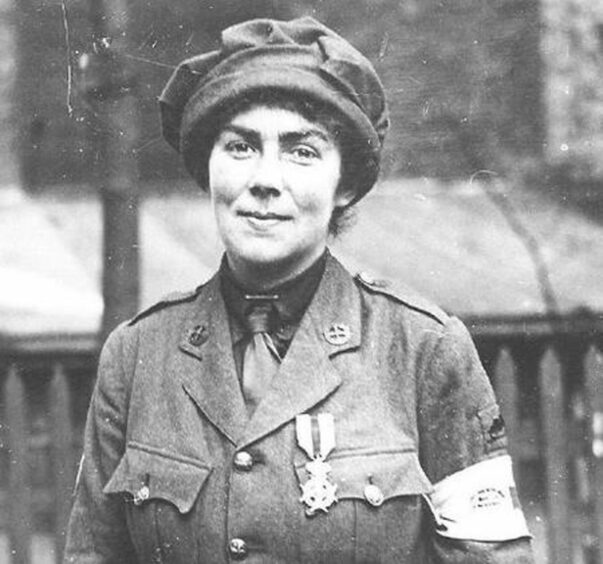

Conversation